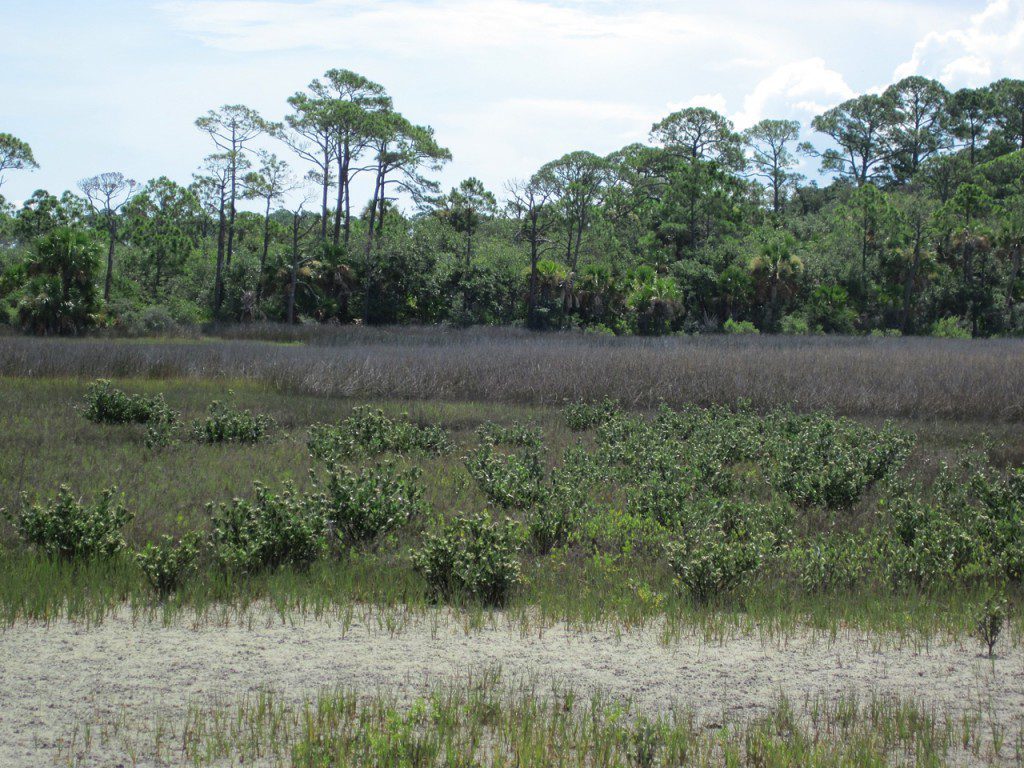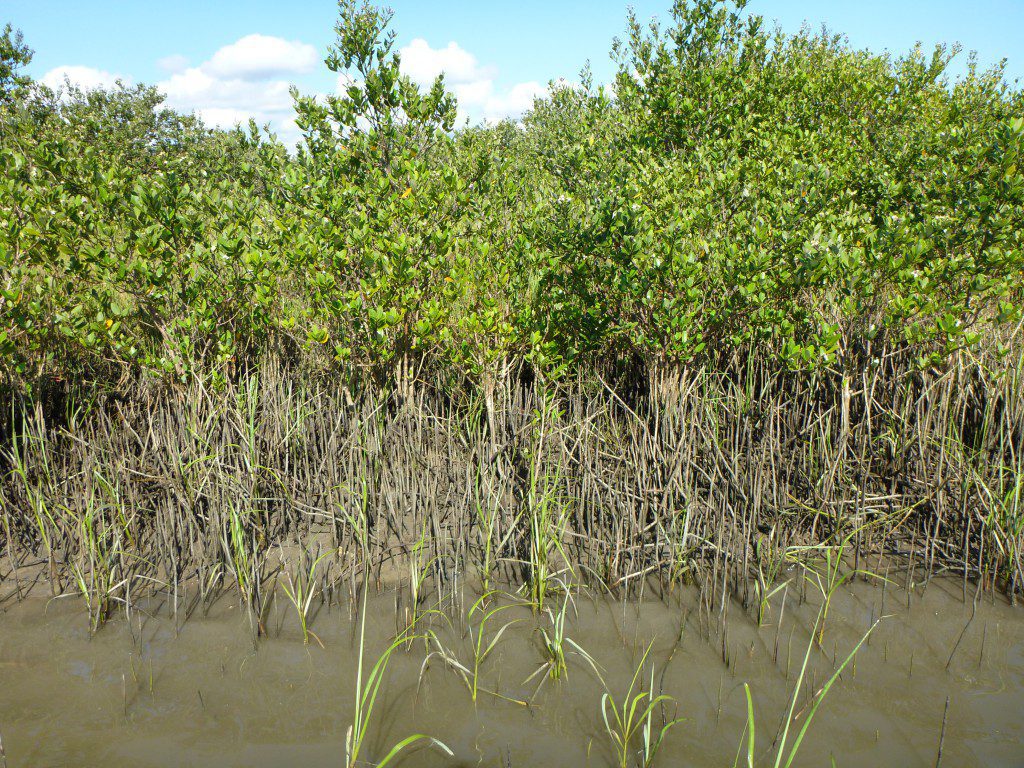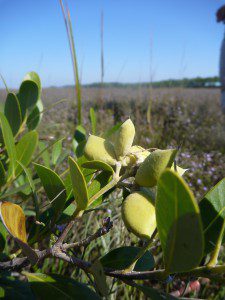2-Minute Video: Mangroves don’t love the cold, but relatively mild winters have seen them multiply north of their range. Randall takes a closer look at black mangroves in the salt marshes of Saint Joseph Bay.
Dr. Randall Hughes FSU Coastal & Marine Lab/ Northeastern University
A few years ago, I took my colleague Dr. Ed Proffitt to check out the marshes in St. Joseph Bay. He asked to see mangroves, and I thought he was crazy. Mangroves up here? No way! But we had only been in one Buffer Preserve salt marsh together for a few minutes before I realized that the small “shrubs” that I had previously ignored were actually small black mangroves! And the more we looked, the more we found. They aren’t everywhere, but they can be quite abundant in some places.

Shrubby black mangroves (Avicennia germinans) appear to be an increasingly common site in the marshes of the Saint Joseph Bay State Buffer Preserve.
Mangroves typically occur below the “frost line”, or in areas that don’t experience hard freezes. Lore has it that mangroves have become more common in the northern Gulf of Mexico in recent years due to a series of mild winters. I haven’t been monitoring them long enough to say whether or not there are more now than there were, say, 10 or even 20 years ago, but it’s not hard to see that the ones that are here are successfully reproducing, with small seedlings surrounding the adult trees.
There are even red mangroves lingering around – they are less cold-tolerant than the black mangroves and a surprise to find in our marshes!
 I definitely have not seen any significant dieback in the last 5 winters, even when we have had hard freezes. And I would not be surprised if they become more common and abundant as the climate continues to change.
I definitely have not seen any significant dieback in the last 5 winters, even when we have had hard freezes. And I would not be surprised if they become more common and abundant as the climate continues to change.
Mangroves in the marsh raise a number of interesting questions. Will they take over? What will that mean for the services these areas provide to people? Will the fishes and crabs that we like to eat become more or less abundant if mangroves dominate over marsh grasses?
Unfortunately, I don’t have the answer to these questions. But I can say that the mangroves that occur in St. Joseph Bay aren’t necessarily “better” at surviving in the northern Gulf than mangroves from farther down south. And why should they be? Well, if a group of mangrove propagules arrived in St. Joe Bay, we may expect that only a subset of them would be able to survive the colder temperatures, and when these propagules grew into adult trees and produced propagules of their own, they should pass that “benefit” to their offspring (the process known as natural selection).
How do we we test whether St. Joe Bay mangroves are better equipped to live here than mangroves from down south? We have 2 ongoing experiments where we’ve planted “propagules” (young mangroves that look a lot like seeds) from different locations throughout FL in St. Joe Bay and followed them through time to see which ones survive and grow the best. There’s a lot of variation, but the St. Joe Bay propagules (which were largely the “runts” of the bunch to begin with) did not do as well as propagules from some of the areas down south such as Cedar Key and Cape Canaveral. These results suggest that it doesn’t take a particularly special propagule to survive in the northern Gulf; instead, there probably aren’t just many propagules that make it up here to begin with.
Of course, we’ve only been monitoring these propagules for 1-2 years; maybe the St. Joe propagules have an advantage when they get old / big enough to reproduce. We don’t want to speed up the mangrove take-over, so we’ll remove the seedlings in our experiment before that happens. But we’ll definitely continue to monitor the ones that already made it here on their own accord to see what they do next!

The Guana Tolomato Matanzas National Estuarine Research Reserve (NERR) south of Saint Augustine is where Randall and David have done a lot of their oyster research. There, mangroves mingle with marsh cordgrass. Could salt marshes in St. Joseph Bay (or north Florida in general) one day look like something approximating this?
Music in the video by pitx.
This material is based upon work supported by the National Science Foundation under Grant Number 1161194. Any opinions, findings, and conclusions or recommendations expressed in this material are those of the author(s) and do not necessarily reflect the views of the National Science Foundation.


